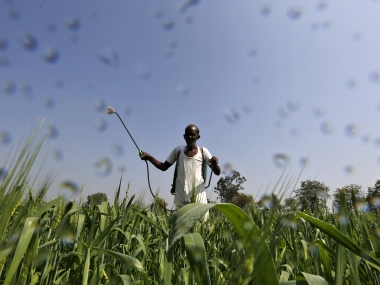A spate of loan waivers have been announced in the recent past and plethora of it has been promised in the near term by players in the political arena. But the question necessitating introspection is whether it will be able to address the widespread farm distress. Going by the experience, these palliatives have hardly dented the problem. On the flip side, besides being a moral hazard, these measures cause immense damage to the formal credit dispensation system and the recovery climate. The political expediency obligates the power aspirants to make unsustainable but populist promises which ultimately hit the economy adversely. The waivers militate against the credit discipline and vitiate the recovery climate which in turn aggravates the bad loan portfolio. The borrowers, who in normal course have no intention of defaulting, despite in possession of resources to repay, delay or avoid repayment in the hope of receiving a waiver. The loanees who timely discharge their liabilities towards the lenders, feel cheated. The disbursements get reduced substantially in the loan cycle ensuing the debt waiver. It is nobody’s case to grudge such benefits to the actual sufferers of natural calamities like drought and flood etc. But a substantial chunk of beneficiaries of across the board waivers is relatively well-off borrowers who have better access to formal credit. Small, marginal and tenant farmers/ sharecroppers besides farm labour who are beyond the outreach of institutional lenders, are often not able to draw succour from such reliefs. But the conundrum of farm distress is real and needs to be addressed with urgency. The debt relief at best is a quick fix and is not a sustainable solution. The answers are simplistic and are not very far to seek. The basic ingredient is the political will to allocate resources and counter the self-serving interests /lobbies working to pursue their vested interests at the cost of rural farm and non-farm sectors. [caption id=“attachment_5466241” align=“alignleft” width=“380”] Representational image. Reuters[/caption] The first step in this direction would be to appreciate the nuances of the rural economy of which agriculture comprises an overwhelming component. This segment suffers from low productivity compared with advanced economies. While the wheat yield is comparable to advanced countries, for paddy it is nearly half of USA/ China/Japan. Around 2/3 rd of Indian agriculture is rainfed and hence must contend with vagaries of monsoon. Out of 160 million hectares (mha) of actual crop area, only 58 mha is irrigated of which 67 percent is by groundwater through borewells and 33 percent by canals. Besides, the agri-technology is not state of the art. Investment, public as well as private, in agri-infrastructure viz. irrigation, land upgradation, research and development, supply chain and food processing need to be ramped up substantially. The other major contributor to rural distress is the unremunerative price of agri-produce. Swaminathan committee classified the agricultural costs into three categories namely A2, A2+FL and C2. While A2 is constituted of actual expenses in cash and kind on inputs like seeds, irrigation, pesticides, fertilizers, wages to hired labour and others, A2+FL comprises A2 plus the notional cost of unpaid family labour. The most comprehensive cost estimate C2, includes interest on loans, rentals for owned and rented land, fixed capital costs in addition to A2+FL. In the current system, CACP arrives at MSP by adding 50 pecent to A2 which does not fully reimburse a remunerative return to the farmer. The demand is for fixing MSP at C2 plus 50 percent which is apparently justified and will go a long way in addressing rural distress. Statutorily imposed market(ing) rigidities in agricultural commodities and other farm produce erect another impediment in the growth of rural sectors by denying free access between the farmer and ultimate consumer. This has been affected by the implementation of archaic Agricultural produce market committee (APMC) Act. Direct buying from the farmer by the traders, processors or exporters is prohibited. To the complete exclusion of private intermediates, only state governments can establish agri-markets which are overwhelmingly controlled by licenced commission agents with strong political backing. Resultingly, both the producer and consumer are disadvantaged. The producer does not get the optimum price and the consumer shells out a higher cost. The influential intermediary chain of middlemen is the biggest gainer of the system. The farmer doesn’t get a remunerative return causing heart burn and distress. Consequently, additional private capital formation is impeded.
The biggest reform required in this regard is to dilute the monopoly of APMCs for marketing of agricultural produce. Not that efforts have not been made in this regard. Model APMC Act 2003 has been proposed for implementation by the states. But well-entrenched trader/ commission agent/ arhtiya lobbies enjoying political patronage have frustrated every step taken in this direction.
Essential Commodities Act 1955 also needs a relook as restrictions under its aegis imposed on the holding of agri-commodities are detrimental to the rural farming community. Of course, balancing of consumer’s interests will need to be done carefully. Likewise, import and export controls require to be regulated with extreme caution e.g. current controls on onion exports is not justified when there is a glut in domestic market leading to the suppression of prices to an abysmally low level and ruling overseas prices are way higher. Reduction of rural distress makes it imperative to reduce or completely do away with restrictions on selling by the farmer to anybody or keep it till he gets a price as per his holding capacity. A system of multiple competing APMCs may be thought of with agri-producer free to sell it to any of them. Bulk consumers of such commodities like flour mills may be allowed to buy directly from the farmer through formal tie-up contracts. Agriculture is incentivised almost across the entire developed world by the governments through direct and indirect subsidies. These support measures though benefit the consumer but adversely impact the developing country farmers to compete in the world market and exert downward pressure on the prices in the domestic markets. This fact builds a strong case for higher subsidisation of Indian agriculture to make it competitive vis a vis cheaper import. In India, the subsidisation so far has been by and large indirect except through periodical loan waivers. As stated earlier, this type of relief benefits only the relatively well-off farmers who have access to institutional credit. The small and marginal cultivators depending upon the private money lenders remain outside the purview of such relief. In such a situation, it is imperative to extend debt relief through a ‘Direct Benefit Transfer’ (DBT) mechanism rather than loan waiver. DBT will have universal coverage and consequently less rural suffering. Rythu Bandhu Scheme of Telangana is a good example though the coverage is not as wide as it should be. Crop failure is another major stress generator for rural masses. The scope of agricultural insurance schemes needs to be expanded to ameliorate the rural stress. Loan waivers, though popular, have a limited advantage for the rural economy but have deleterious effects on the institutional lending system and the credit discipline. It is not the panacea for the rural distress as it is thought to be. Debt relief addresses only a small part of the problem. The elephant in the room has many more dimensions and demands which need to be fulfilled. (The author is a former executive with SBI)


)

)
)
)
)
)
)
)
)



